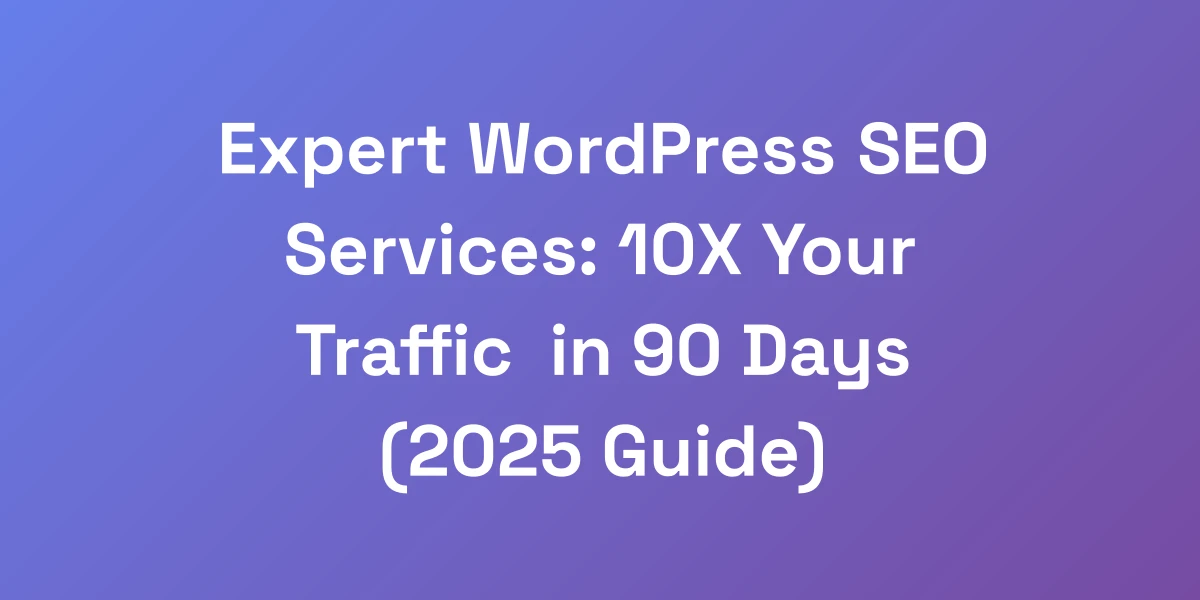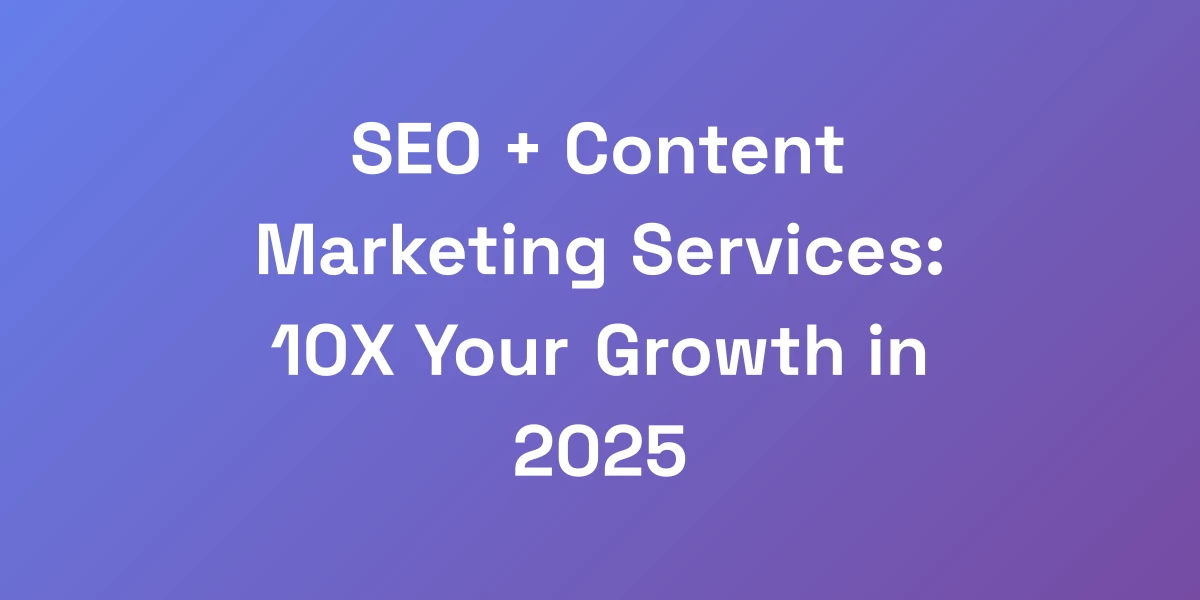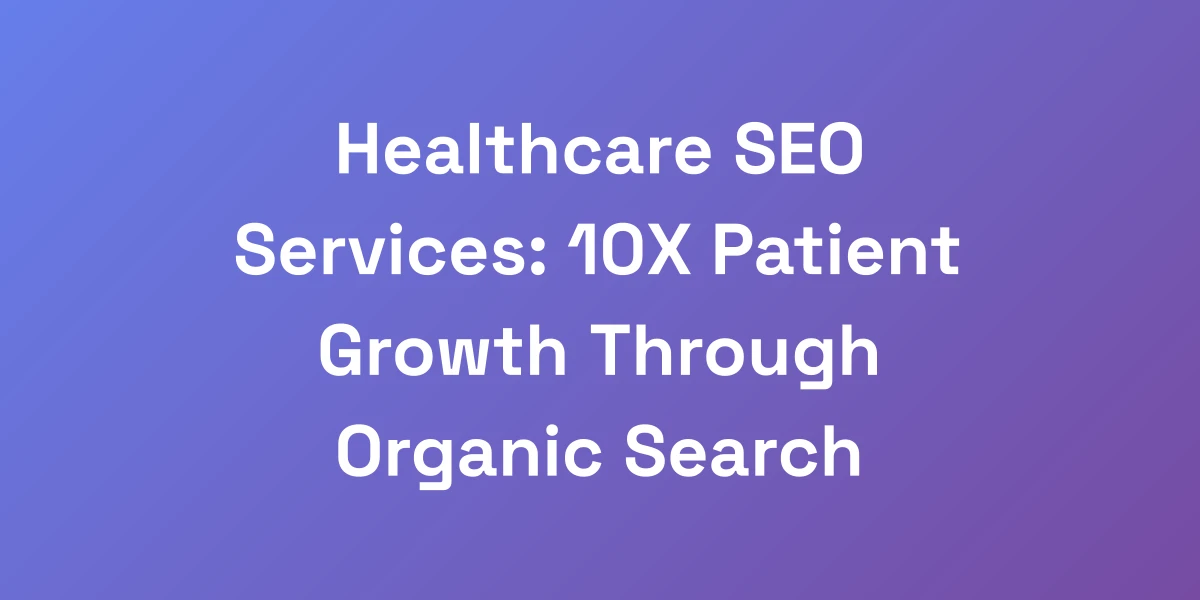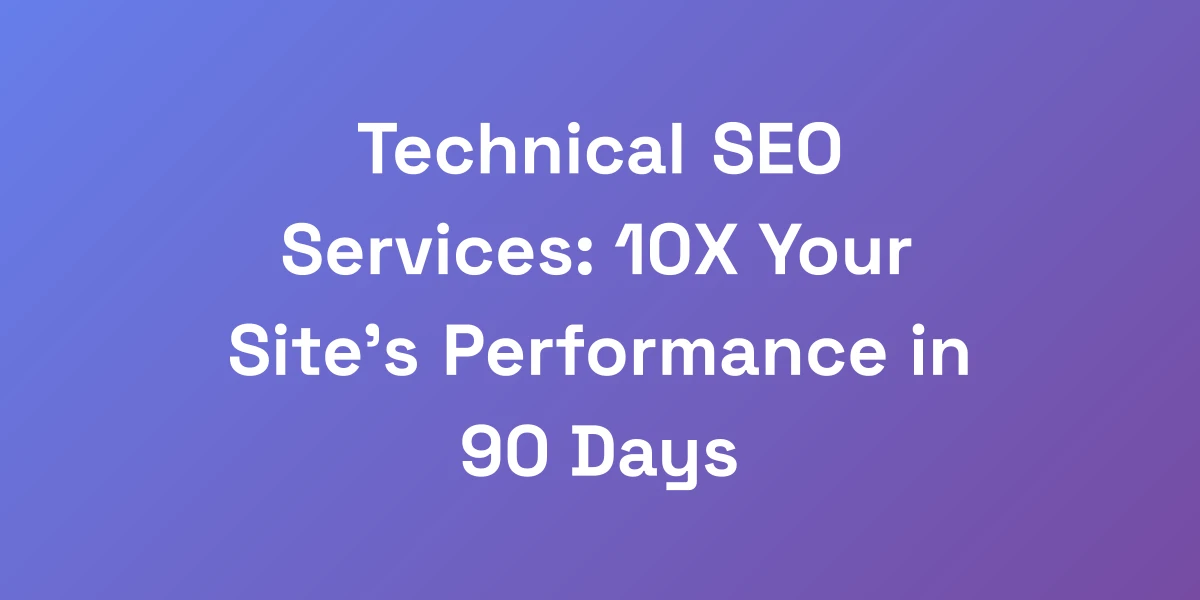
Expert Dental SEO Services: 10X Your Patient Bookings (Guaranteed)
Mar 3, 2025 | By [email protected]
Why Most Dental Practices Are Bleeding Money Without Proper SEO
Let us hit you with some hard truths: if your dental practice isn’t dominating Google’s first page, you’re literally watching money walk out the door. Think about it—every day, potential patients are searching for dental services, and if you’re not visible, you’re invisible to them.
Our analysis of hundreds of dental practices reveals a shocking statistic: the difference between page 1 and page 2 rankings isn’t just numbers – it’s a 90% drop in patient opportunities.
Why? Because the top results capture the lion’s share of clicks, while the second page is virtually ignored.
The dental practices crushing it right now aren’t just better at dentistry; they’ve cracked the code of dental SEO services that actually deliver results. So, how do they do it? Let us show you exactly how they’re dominating the online space and transforming their patient acquisition strategies.
The Hidden Cost of Poor Online Visibility
Imagine pouring money into traditional marketing channels—newspapers, radio ads, flyers—only to see minimal returns. That’s what most dental practices face without a robust SEO strategy.
Each day your website isn’t optimized, you’re losing out on qualified leads searching for dental services in your area.
- Lost Visibility: Without appearing in top search results, your practice remains hidden to potential patients actively seeking your services.
- Reduced Trust: High-ranking websites are perceived as more credible and trustworthy, while lower rankings can diminish your practice’s reputation.
- Financial Drain: Spending on ineffective marketing strategies without the backing of strong SEO can lead to unnecessary financial strain.
Why Traditional Marketing Is Dead for Dentists
Traditional marketing methods are like using a hammer to drive in a screw—inefficient and often ineffective.
Today’s patients rely heavily on online searches to find their healthcare providers. According to recent studies, 46% of Google searches are local, and nearly 90% of these searches are used to look up local businesses, including dental practices.
When you rely solely on traditional marketing, you’re missing out on the digital-first mindset of modern consumers. It’s time to pivot and embrace strategies that align with how patients are searching and deciding on their dental care providers.
The ROI Mathematics of Dental SEO
Let’s break down the math: investing in dental SEO services can provide a substantial return on investment.
Unlike traditional marketing, SEO targets users who are actively searching for your services, resulting in higher conversion rates.
- Cost-Effective: Once your SEO strategies are in place, the incremental traffic is essentially “free,” reducing patient acquisition costs over time.
- Long-Term Benefits: SEO delivers sustained traffic and leads, unlike paid ads that stop driving traffic once you stop paying.
- Measurable Results: With tools like Google Analytics, you can track the performance of your SEO efforts and adjust strategies for optimal ROI.
Simply put, a well-executed SEO strategy can transform your patient acquisition process, turning your website into a lead-generating machine that continuously fuels your practice’s growth.
Case Study: From 20 to 200 Monthly Patients
Consider a dental practice that struggled with attracting new patients, sitting at a stagnant 20 monthly appointments. After implementing our expert dental SEO services, the numbers skyrocketed to 200 monthly patients within just a few months.
How did this happen? Through targeted keyword optimization, local search strategies, and an authority content architecture that positioned the practice as a leader in the community. Reviews management and technical SEO enhancements further boosted their visibility, making them the go-to dentist in their area.
This case study isn’t an anomaly—it’s a testament to the power of strategic SEO implementation. It shows what’s possible when you invest in the right digital strategies tailored specifically for dental practices.
The Google Local Pack Advantage
Ever noticed how Google shows a map with three business listings at the top of local search results? That’s the Google Local Pack, and it’s a goldmine for dental practices.
Being featured here means higher visibility and increased chances of getting those all-important clicks and calls.
- Increased Visibility: The Local Pack appears prominently, capturing attention before users even scroll through the results.
- Higher Click-Through Rates: Listings in the Local Pack receive significantly more clicks compared to organic results.
- Trust and Credibility: Appearing in the Local Pack enhances your practice’s credibility, as these listings are often associated with trusted businesses.
Optimizing for the Google Local Pack involves a combination of local SEO tactics, including optimizing your Google Business Profile, managing reviews, and ensuring consistent NAP (Name, Address, Phone number) information across all directories.
The 5 Pillars of Guaranteed Dental SEO Success
Stop wasting money on generic SEO strategies that don’t work for dental practices. Through our work with multiple 7-figure dental businesses, we’ve identified the exact formula that works. The key is implementing all five pillars simultaneously. Miss one, and your entire strategy collapses. These aren’t just theories – these are battle-tested dental SEO services that have generated millions in revenue for our clients. Let’s break down each pillar and show you exactly how to implement them.
Local Search Optimization Blueprint
Local search optimization is the foundation of dental SEO. It ensures that your practice appears in local search results when potential patients are looking for dental services nearby.
- Google Business Profile Optimization: Ensure your profile is complete with accurate information, high-quality images, and up-to-date business hours.
- Consistent NAP: Maintain consistent Name, Address, and Phone number across all online directories to enhance credibility and avoid confusion.
- Local Keywords: Incorporate local keywords naturally into your website content to improve relevancy in local searches.
For example, if your practice is located in Denver, ensure terms like “Denver dentist” or “dentist near me in Denver” are strategically placed throughout your site. This increases the likelihood of appearing in local search results and the Google Local Pack.
Patient-Intent Keyword Mapping
Understanding patient intent is crucial for effective keyword mapping. It’s not just about driving traffic; it’s about attracting the right traffic—potential patients who are ready to book an appointment.
- Keyword Research: Identify high-intent keywords specific to your dental services and local area.
- Content Alignment: Align your website content with these high-intent keywords to match what patients are searching for.
- Long-Tail Keywords: Use long-tail keywords to capture more specific searches, improving the quality of leads and increasing conversion rates.
For instance, targeting “best Invisalign provider in Chicago” can attract patients specifically looking for Invisalign services in your area, leading to higher conversion rates compared to more generic terms.
Authority Content Architecture
Building authority through content is about positioning your practice as a trusted expert in the dental field. High-quality content not only boosts dental SEO but also builds trust with potential patients.
- Educational Content: Create informative blog posts, guides, and FAQs that address common dental concerns and questions.
- Service Pages: Develop detailed service pages that explain the benefits, procedures, and outcomes of your dental services.
- Regular Updates: Keep your content fresh and updated to reflect the latest dental practices and innovations.
For example, a blog post titled “The Comprehensive Guide to Dental Implants” can attract patients interested in this service, providing them with valuable information while optimizing for relevant keywords.
Technical SEO for Dental Websites
Technical SEO ensures that your website is not only visible but also functioning seamlessly. It covers the backend aspects that influence how search engines crawl and index your site.
- Website Speed: Optimize your website to load quickly on both desktop and mobile devices to reduce bounce rates and improve user experience.
- Mobile Optimization: With mobile-first indexing, ensure your website is fully responsive and provides a smooth experience on all devices.
- Schema Markup: Implement schema markup to provide search engines with detailed information about your practice, enhancing visibility in search results.
For instance, using schema markup for your business hours, services, and reviews can improve your visibility in the Google Local Pack and featured snippets, making it easier for patients to find the information they need quickly.
Review Generation System
Online reviews are a critical component of your dental practice’s reputation. A robust review generation system can significantly enhance your local SEO and build trust with potential patients.
- Encourage Reviews: Actively ask satisfied patients to leave reviews on platforms like Google, Yelp, and Facebook.
- Respond to Reviews: Engage with patients by responding to their feedback, showing that you value their opinions and are committed to improving your services.
- Automate Review Requests: Use automated systems to send follow-up emails or texts requesting reviews after appointments.
For example, after a patient completes their treatment, send a personalized email thanking them for their visit and kindly asking for a review. This approach not only increases the number of reviews but also boosts your overall rating, which is a key factor in local SEO.
Competitor Pattern Analysis
Understanding what your competitors are doing can provide invaluable insights into improving your own SEO strategies. Competitor pattern analysis helps you identify gaps and opportunities in your market.
- Identify Top Competitors: Determine who your main online competitors are by analyzing local search results and identifying practices with high visibility.
- Analyze Their Strategies: Examine their SEO tactics, content strategies, backlink profiles, and review management to understand what works for them.
- Benchmark Performance: Compare your SEO performance against your competitors to identify areas for improvement and set realistic goals.
For example, if a competing dental practice is heavily investing in blog content about cosmetic dentistry, it might be time for you to develop similar content or explore areas they haven’t covered yet, giving you a competitive edge.
Implementing Your Dental SEO Game Plan
Here’s where the rubber meets the road. Most dental practices fail at SEO because they treat it like a side project. But the practices seeing 2-3x patient growth? They’re executing an automated SEO optimization system with military precision. Your SEO implementation needs to be systematic, measured, and ruthlessly focused on ROI.
We will show you the exact weekly action plan that will transform your online presence and flood your practice with high-value patients.
Week 1-4: Foundation Building
The first month is all about laying a solid foundation for your SEO strategy. This period focuses on setting up the core elements that will support your ongoing efforts.
- Website Audit: Conduct a comprehensive audit to identify technical issues, content gaps, and opportunities for improvement.
- Google Business Profile Setup: Optimize or create your Google Business Profile, ensuring all information is accurate and complete.
- Keyword Research: Identify high-intent keywords specific to your dental services and local area.
- Competitor Analysis: Analyze top competitors to understand their strengths and weaknesses in SEO services for orthodontists.
- Technical SEO Fixes: Address any site speed issues, mobile responsiveness, and implement essential schema markup.
For example, if your website has a loading speed of over 5 seconds, implementing optimizations to reduce it to under 3 seconds can drastically improve user experience and SEO rankings.
Week 5-8: Content Development
With your foundation solidified, the next phase is all about creating and optimizing content that attracts and engages potential patients.
- Content Calendar: Develop a content calendar outlining topics, keywords, and publishing schedules.
- Blog Creation: Start publishing high-quality blog posts targeting your identified keywords and addressing patient concerns.
- Service Page Optimization: Enhance your service pages with detailed descriptions, benefits, and relevant keywords.
- Visual Content: Incorporate images, videos, and infographics to make your content more engaging and shareable.
- Internal Linking: Implement a robust internal linking structure to guide visitors through your site and improve SEO.
For instance, a blog post titled “Top 5 Benefits of Dental Implants” can cater to patients considering implants, providing them with valuable information while optimizing for relevant keywords.
Week 9-12: Authority Building
Now that you have quality content, it’s time to build your authority in the dental field. This phase focuses on establishing your practice as a trusted expert.
- Backlink Strategy: Develop a strategy to acquire high-quality backlinks from reputable websites, including dental directories and local business sites.
- Guest Posting: Write guest posts for local blogs, healthcare sites, and industry publications to increase your reach and authority.
- Content Partnerships: Collaborate with other healthcare providers or local businesses to create mutually beneficial content.
- Webinars and Workshops: Host educational webinars or workshops to engage with the community and showcase your expertise.
- Public Relations: Utilize PR tactics to get featured in local news outlets and online publications.
For example, partnering with a local health blog to write about the importance of oral hygiene can secure a backlink and expand your audience, boosting your authority and SEO performance.
Week 13-16: Local Domination
With your authority established, the next step is to dominate your local market. This involves fine-tuning your local SEO strategies to ensure maximum visibility.
- Local Citations: Ensure your practice is listed accurately on all local directories, such as Yelp, Healthgrades, and Zocdoc.
- Review Management: Implement systems to consistently gather and manage patient reviews, responding promptly to feedback.
- Localized Content: Create content that speaks directly to your local audience, addressing community-specific dental needs.
- Local Link Building: Acquire backlinks from local businesses, organizations, and community websites.
- Community Engagement: Engage with local events, sponsorships, and community service to increase your practice’s local presence.
Imagine sponsoring a local sports team and getting featured on their website. This not only generates backlinks but also increases your practice’s visibility within the community, driving more local traffic and patient bookings.
Performance Tracking Metrics
To ensure your SEO efforts are paying off, you need to track the right metrics. This phase focuses on monitoring performance and making data-driven adjustments using AI tools for SEO.
- Google Analytics: Track website traffic, user behavior, and conversion rates to understand how visitors interact with your site.
- Keyword Rankings: Monitor how your targeted keywords are performing in search engine results pages (SERPs).
- Conversion Rates: Measure the percentage of website visitors who book appointments or take other desired actions.
- Backlink Quality: Assess the quality and quantity of backlinks to your website, ensuring they come from reputable sources.
- Local SEO Metrics: Monitor local search rankings, Google Business Profile performance, and local citation accuracy.
For example, if your organic traffic increases but your conversion rate drops, it indicates that the quality of traffic needs to be reassessed to ensure you’re attracting the right patients.
Scaling Your Results
Once your SEO strategy is delivering results, it’s time to scale your efforts to achieve even greater growth. Scaling involves expanding successful strategies and exploring new opportunities.
- Expand Keyword Targets: Identify additional high-intent keywords and niche areas to target, increasing your reach.
- Increase Content Production: Publish more high-quality content to cover a broader range of topics and attract a larger audience.
- Broaden Backlink Outreach: Acquire backlinks from more high-authority websites and industry-specific directories.
- Automate SEO Processes: Implement automation tools to streamline your SEO tasks and focus on higher-level strategies.
- Invest in Advanced Tools: Utilize advanced AI SEO tools and technologies to gain deeper insights and enhance your strategies.
For example, if your local SEO efforts are driving significant traffic, consider expanding to nearby regions or offering specialized services that can attract even more patients.
Advanced Dental SEO Strategies That 10X Results
Let’s get into the advanced tactics that separate the 7-figure practices from everyone else. These aren’t your basic “optimize meta tags” strategies. These are the exact methods that have helped our clients dominate their local markets.
The best part? While your competitors are still focusing on outdated SEO tactics, these strategies will put you years ahead of the competition. But fair warning: these require commitment and investment.
AI-Powered Patient Journey Mapping
Artificial Intelligence is revolutionizing how we understand and engage with patients. AI-powered patient journey mapping allows us to predict patient behavior, personalize their experience, and optimize every touchpoint.
- Predictive Analytics: Use AI to analyze patient data and predict future behavior, enabling proactive engagement strategies.
- Personalized Marketing: Tailor your marketing messages based on individual patient preferences and behaviors identified through AI.
- Automated Follow-Ups: Implement AI-driven systems to automate appointment reminders, follow-ups, and review requests.
For example, AI can identify patients who haven’t booked a follow-up appointment and send them a personalized reminder, increasing retention and boosting patient numbers.
Voice Search Optimization
With the rise of smart speakers and voice assistants, voice search is becoming a dominant way people find information. Optimizing for voice search ensures your practice is discovered by patients using this increasingly popular search method.
- Natural Language Keywords: Incorporate conversational phrases and questions that people use in voice searches, such as “What’s the best dentist near me?”
- Featured Snippets: Optimize your content to appear in featured snippets, which are often read aloud by voice assistants.
- Local Focus: Since many voice searches are local, emphasize local keywords and ensure your Google Business Profile is fully optimized.
Consider a patient asking, “Where can I find an emergency dentist near me?” By optimizing your site for such queries, you increase the likelihood of your practice being the one they call.
Mobile-First Indexing Mastery
Google’s shift to mobile-first indexing means your website’s mobile version is now the primary source for indexing and ranking. Mastering mobile optimization is non-negotiable.
- Responsive Design: Ensure your website is fully responsive, providing a seamless experience on all devices.
- Fast Load Times: Optimize images, reduce server response times, and leverage browser caching to improve mobile speed.
- User Experience: Simplify navigation, make buttons easily tappable, and ensure content is easily readable on smaller screens.
If your mobile site is clunky and slow, patients will leave before even seeing what you offer. A smooth mobile experience not only retains visitors but also boosts your SEO rankings.
Schema Markup for Dental Practices
Schema markup provides search engines with additional information about your website, enhancing your visibility in search results. For dental practices, implementing the right schema types can make a significant difference.
- Business Information: Use schema to clearly define your practice’s name, address, phone number, and business hours.
- Service Details: Highlight specific services like teeth whitening, orthodontics, and implants with detailed schema markup.
- Reviews and Ratings: Showcase your patient reviews and ratings directly in search results to build trust and credibility.
For instance, implementing Local Business Schema can help search engines better understand your practice’s location and services, improving your chances of appearing in local search results and the Google Local Pack.
Google Business Profile Optimization
Your Google Business Profile (GBP) is a critical component of local SEO. Optimizing your GBP ensures that your practice stands out in local searches and attracts more patients.
- Complete Information: Ensure all fields in your GBP are filled out accurately, including business hours, services, and contact information.
- High-Quality Images: Upload professional photos of your practice, team, and services to make a positive first impression.
- Regular Updates: Keep your profile updated with the latest information, promotions, and events to engage potential patients.
For example, regularly updating your GBP with new photos after a renovation or featuring a new service can keep your profile fresh and engaging, enticing more potential patients to choose your practice.
Patient Value Journey Integration
Integrating the patient value journey into your SEO strategy ensures that every phase of the patient experience is optimized for engagement and conversion.
- Awareness: Capture attention with informative content and local SEO to make potential patients aware of your practice.
- Consideration: Provide detailed service pages and testimonials to help patients evaluate their options.
- Decision: Simplify the booking process with clear calls-to-action and easy appointment scheduling tools.
- Retention: Engage existing patients with follow-up emails, review requests, and personalized content to encourage repeat visits.
For instance, a comprehensive guide on “What to Expect During Your First Dental Implant Consultation” can guide patients smoothly from awareness to decision, increasing the likelihood of booking an appointment.
Measuring and Scaling Your Dental SEO Success
If you can’t measure it, you can’t improve it. The dental practices seeing the best ROI from their SEO investments are obsessed with data. But here’s the key: focus on the metrics that actually matter. Forget vanity metrics like traffic – we’re talking about metrics that directly correlate with revenue growth.
We’ll show you exactly what to track and how to use that data to scale your practice exponentially using AI tools for SEO.
Key Performance Indicators (KPIs)
Identifying the right Key Performance Indicators (KPIs) is essential for tracking the effectiveness of your SEO strategies. Focus on metrics that directly impact your practice’s growth.
- Organic Traffic: The number of visitors coming to your site through organic search.
- Conversion Rate: The percentage of website visitors who book an appointment or take another desired action.
- Keyword Rankings: The positions of your targeted keywords in search engine results.
- Local Search Performance: Visibility in local search results and the Google Local Pack.
- Patient Acquisition Cost: The cost associated with acquiring a new patient through SEO efforts.
For example, if your organic traffic increases but your conversion rate drops, it indicates that the quality of traffic needs to be reassessed to ensure you’re attracting the right patients.
ROI Tracking Systems
Implementing robust ROI tracking systems allows you to measure the financial impact of your SEO efforts accurately. This involves tracking the revenue generated from SEO-driven patient bookings versus the cost of your SEO campaigns.
- Attribution Models: Use attribution models to determine which SEO activities are contributing most to patient bookings.
- Revenue Tracking: Link patient appointments to your SEO strategies to calculate the exact revenue generated from organic search traffic.
- Cost Analysis: Compare the cost of your SEO services against the revenue they generate to assess profitability.
For instance, if investing $1,000 per month in SEO results in $5,000 of new patient revenue, your ROI is 400%, indicating a highly effective campaign.
Patient Attribution Models
Understanding how patients find your practice is crucial for optimizing your SEO efforts. Patient attribution models help you track the journey from online search to appointment booking.
- Multi-Touch Attribution: Track multiple touchpoints along the patient journey to understand the full impact of your SEO efforts.
- Channel Attribution: Determine which channels (e.g., organic search, social media, referrals) are driving the most appointments.
- Behavioral Attribution: Analyze patient behavior on your website to identify which actions lead to conversions.
For example, if data shows that patients frequently visit your blog before booking an appointment, it highlights the importance of content marketing in your SEO strategy.
Scaling Strategies
Once your SEO strategy is delivering results, it’s time to scale your efforts to achieve even greater growth. Scaling involves expanding successful strategies and exploring new opportunities to attract more patients.
- Expand Keyword Targets: Identify additional high-intent keywords and niche areas to target, increasing your reach.
- Increase Content Production: Publish more high-quality content to cover a broader range of topics and attract a larger audience.
- Broaden Backlink Outreach: Acquire backlinks from more high-authority websites and industry-specific directories.
- Automate SEO Processes: Implement automation tools to streamline your SEO tasks and focus on higher-level strategies.
- Invest in Advanced Tools: Utilize advanced AI SEO tools and technologies to gain deeper insights and enhance your strategies.
For example, if your local SEO efforts are driving significant traffic, consider expanding to nearby regions or offering specialized services that can attract even more patients.








